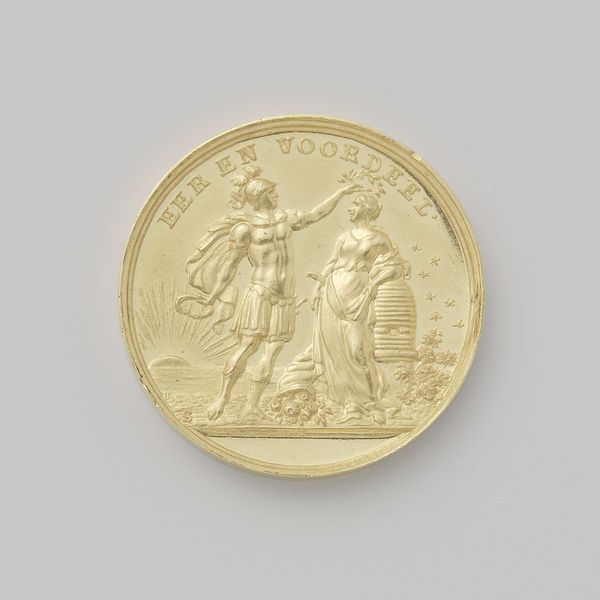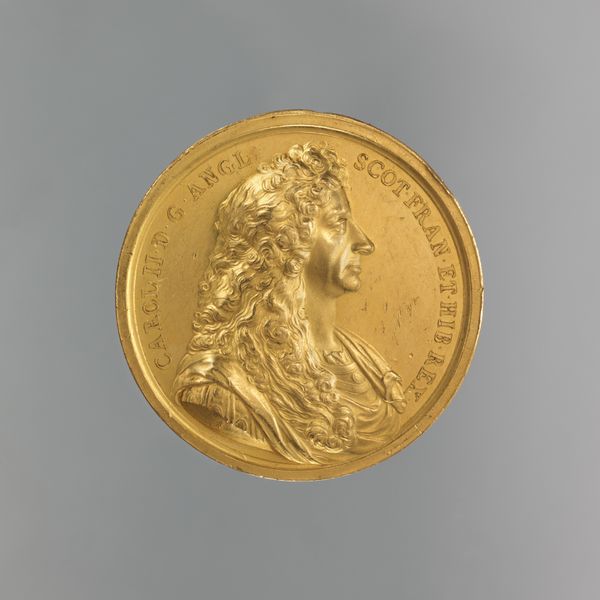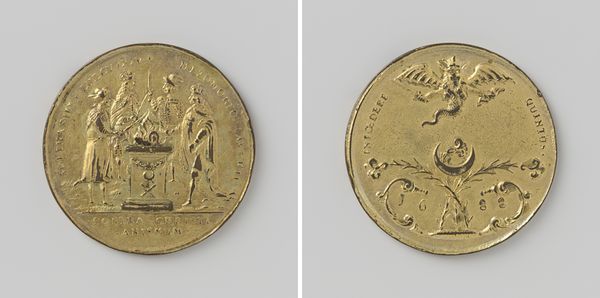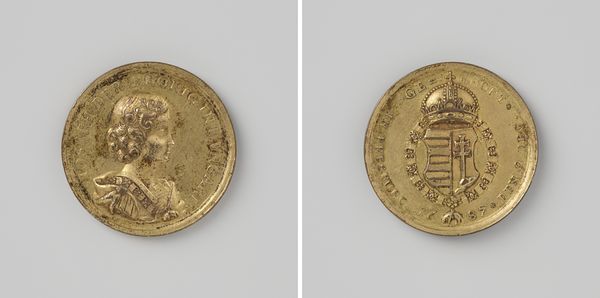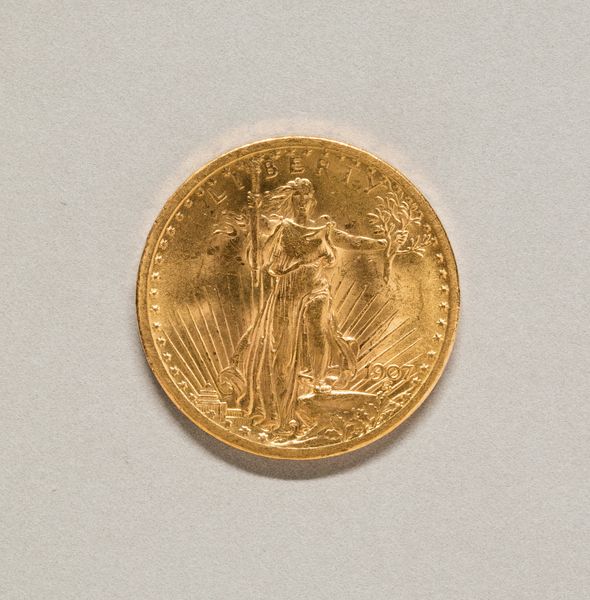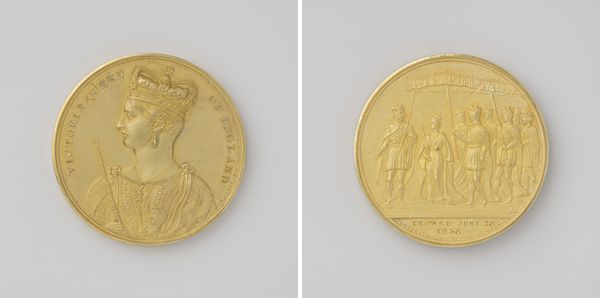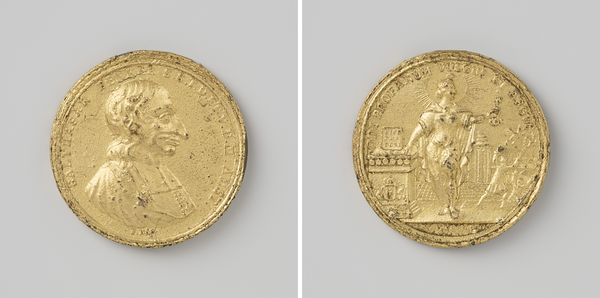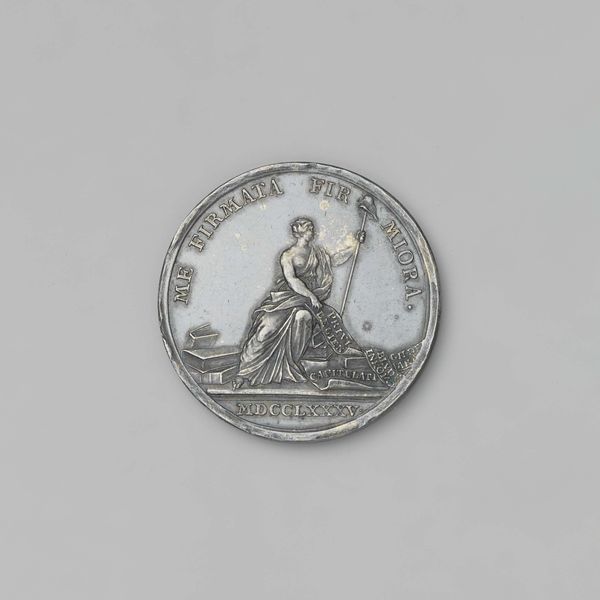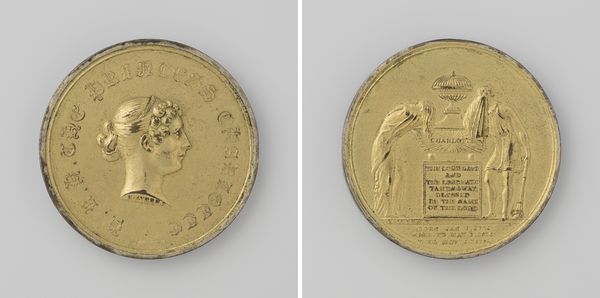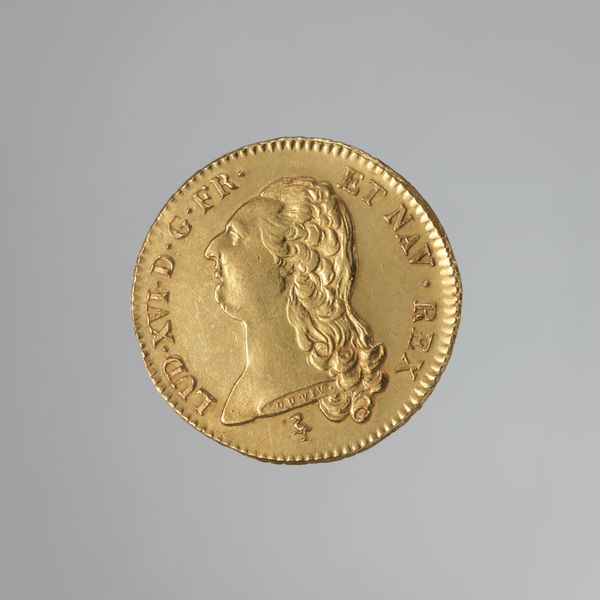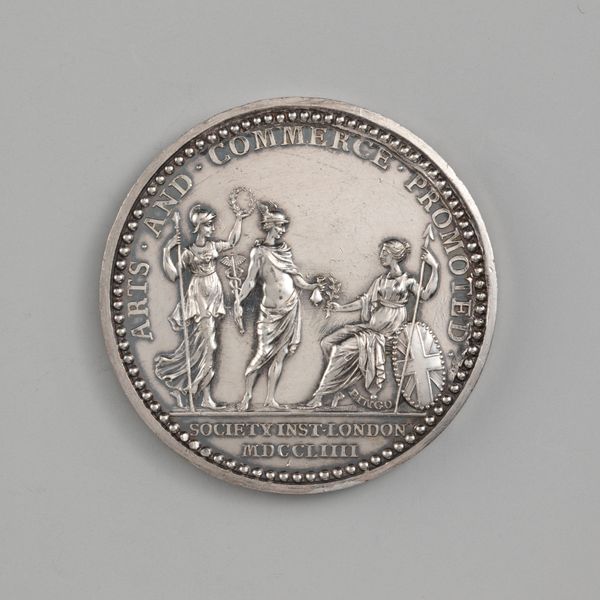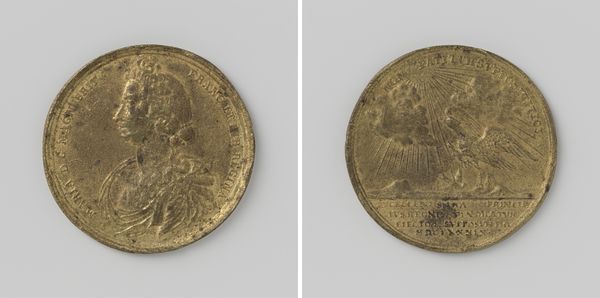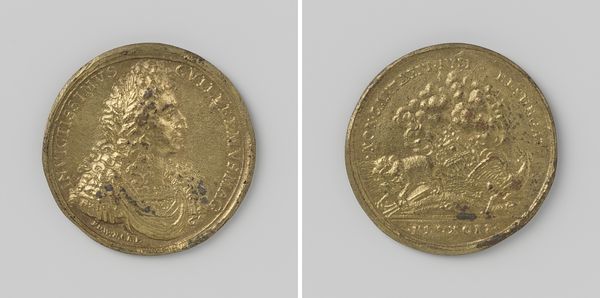
's-Hertogenbosch, vroedschapspenning op Lodewijk Willem Ernst, hertog van Brunswijk-Wolfenbuttel, sinds 25 jaar gouverneur van 's-Hertogenbosch 1776
0:00
0:00
metal
#
narrative-art
#
metal
#
classicism
#
history-painting
Dimensions: diameter 3.3 cm, weight 15.77 gr
Copyright: Rijks Museum: Open Domain
Curator: This exquisite metal piece, dated 1776, is titled "'s-Hertogenbosch, vroedschapspenning op Lodewijk Willem Ernst, hertog van Brunswijk-Wolfenbuttel, sinds 25 jaar gouverneur van 's-Hertogenbosch." Quite a mouthful! Editor: It certainly is! At first glance, the classical style gives me the impression of restrained elegance, you know? But there’s also something oddly comical about the juxtaposition of the stout gentleman and the classically draped woman. Is it just me? Curator: Not at all. The "stout gentleman" is, in fact, Duke Lodewijk Willem Ernst, being honored on this medal for his 25 years as governor. The woman, of course, represents the city of 's-Hertogenbosch offering a gift—symbolized by the laurel branch— in celebration of his leadership. The scene is set against a backdrop where classicism served as the artistic language of power and authority. Editor: I see. The symbolic language can be a bit much at times. It’s as if they needed to write a thesis with their art. Yet, despite that, this object feels incredibly intimate. It's gold, after all, like a giant golden chocolate coin. I’m drawn to the idea of a gift being given to celebrate the longevity of servitude, so archaic. It feels really problematic. Curator: It absolutely warrants deeper interrogation. Power structures of the late 18th century were meticulously constructed through art. This medal functions as propaganda celebrating the virtues of long-serving leadership under the guise of civic appreciation, it papers over complex dynamics of power and governance that affect race, class and gender at that time. Editor: Precisely. In a weird way, its very existence prompts an immediate and necessary questioning of its implied narrative of a universally beneficial leadership. Like a sparkly truth serum. What I thought was quaint now makes me slightly angry! Curator: Exactly, that's where the value lies. This single artwork encapsulates crucial discussions regarding art's role in power and commemoration. Editor: Thanks for sharing your perspective on that.
Comments
No comments
Be the first to comment and join the conversation on the ultimate creative platform.
